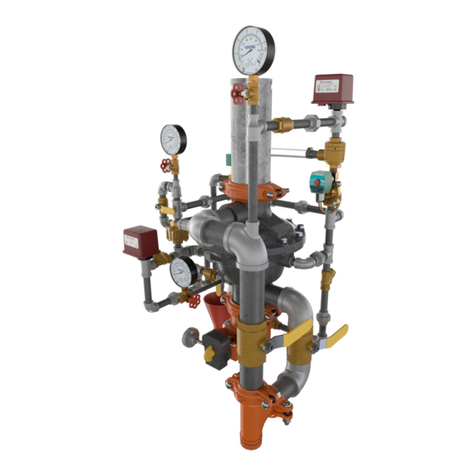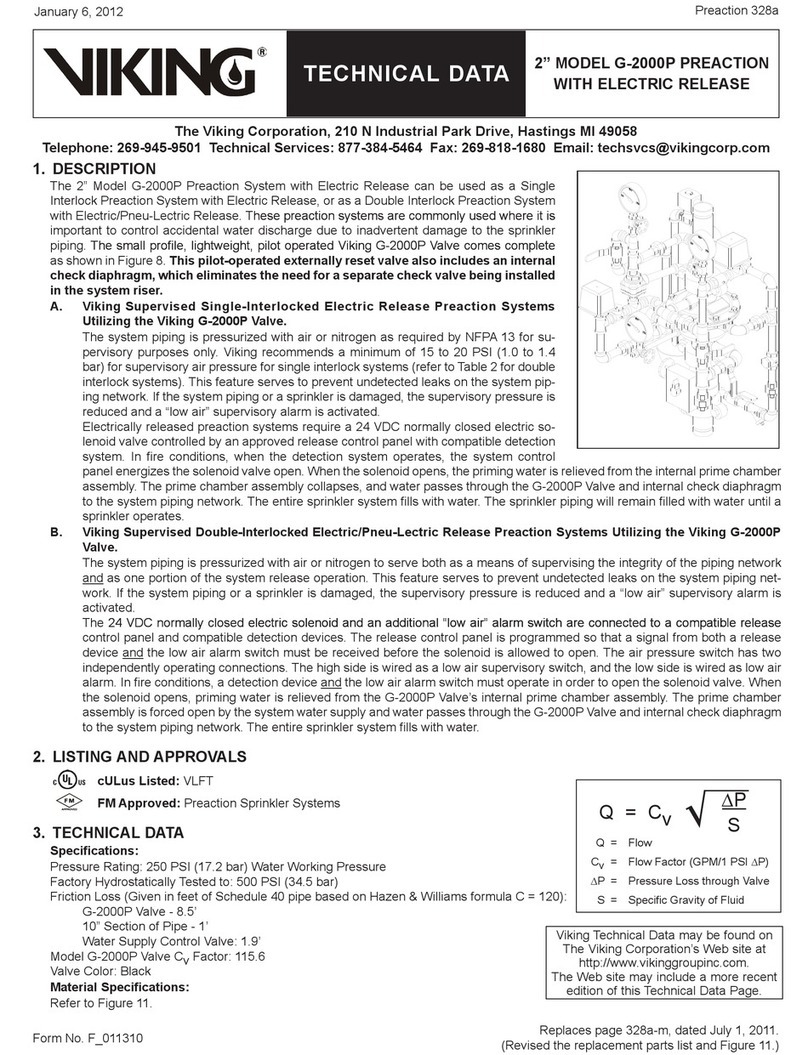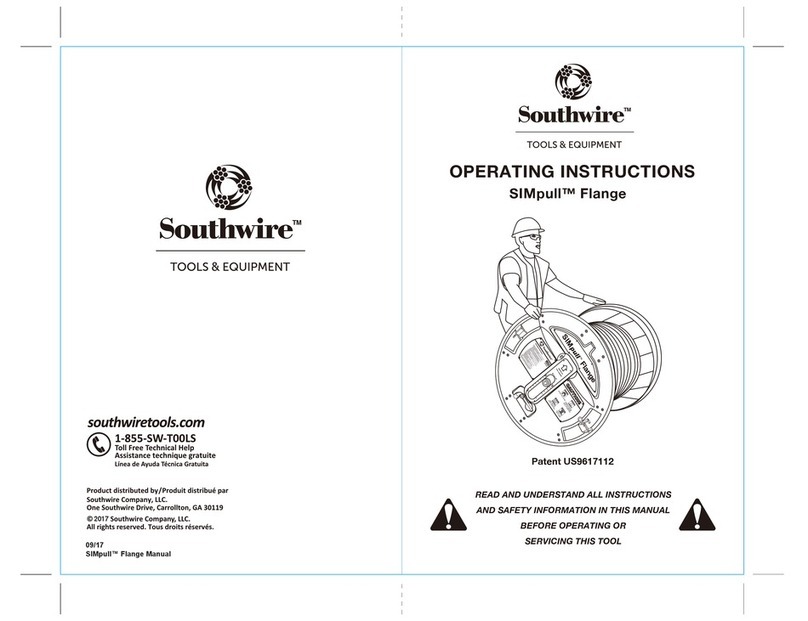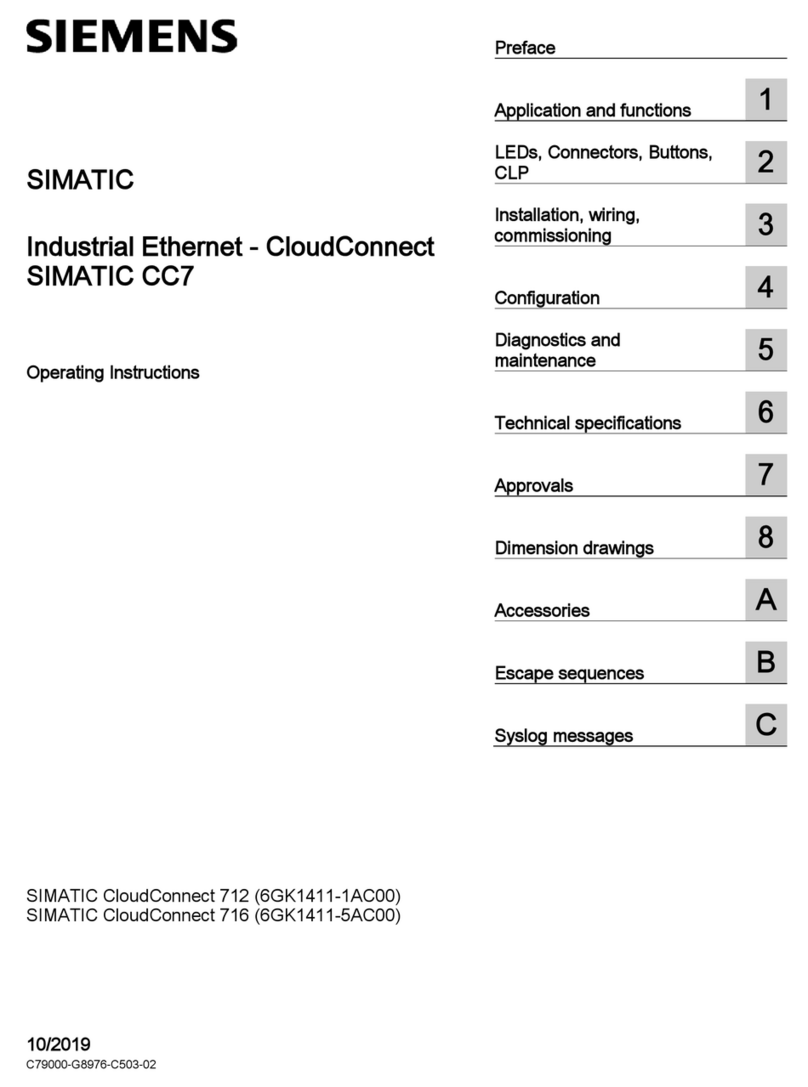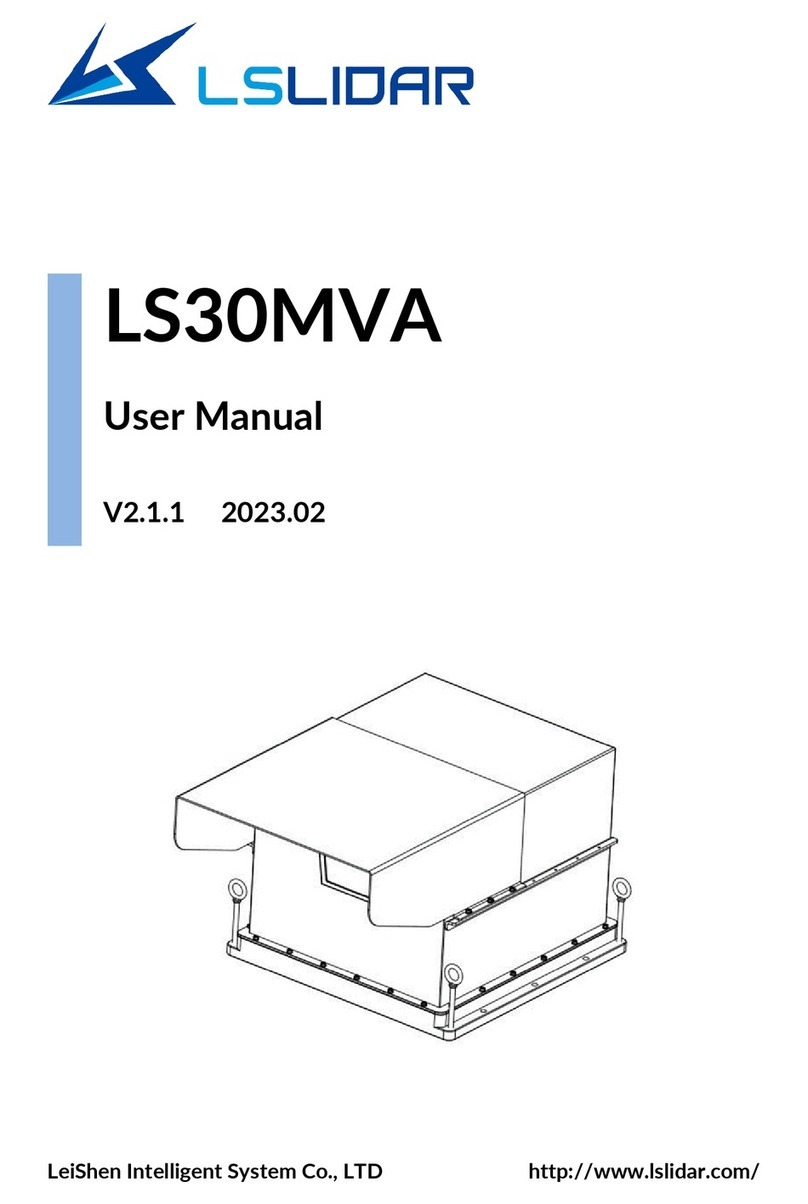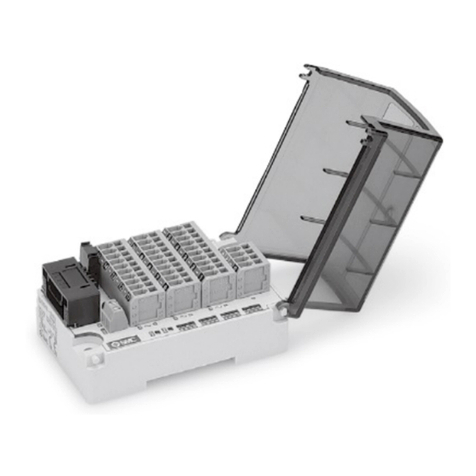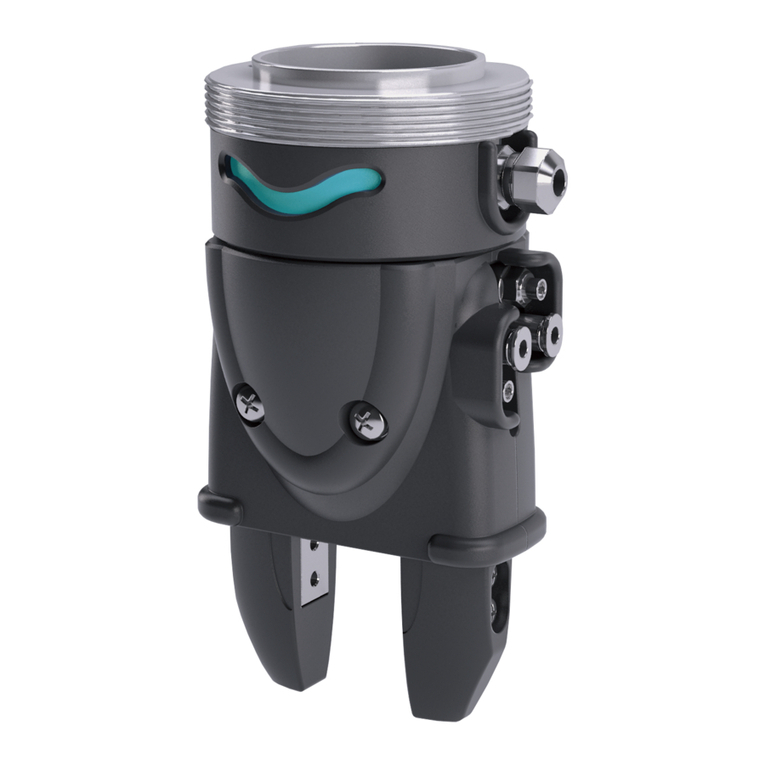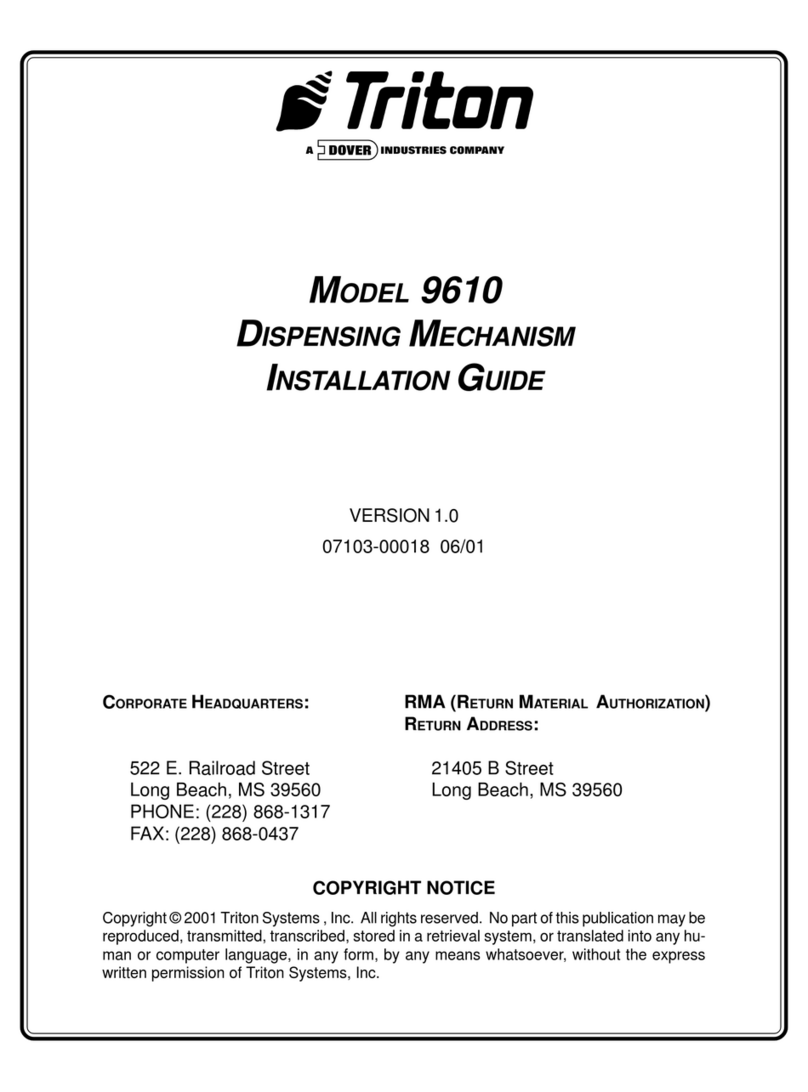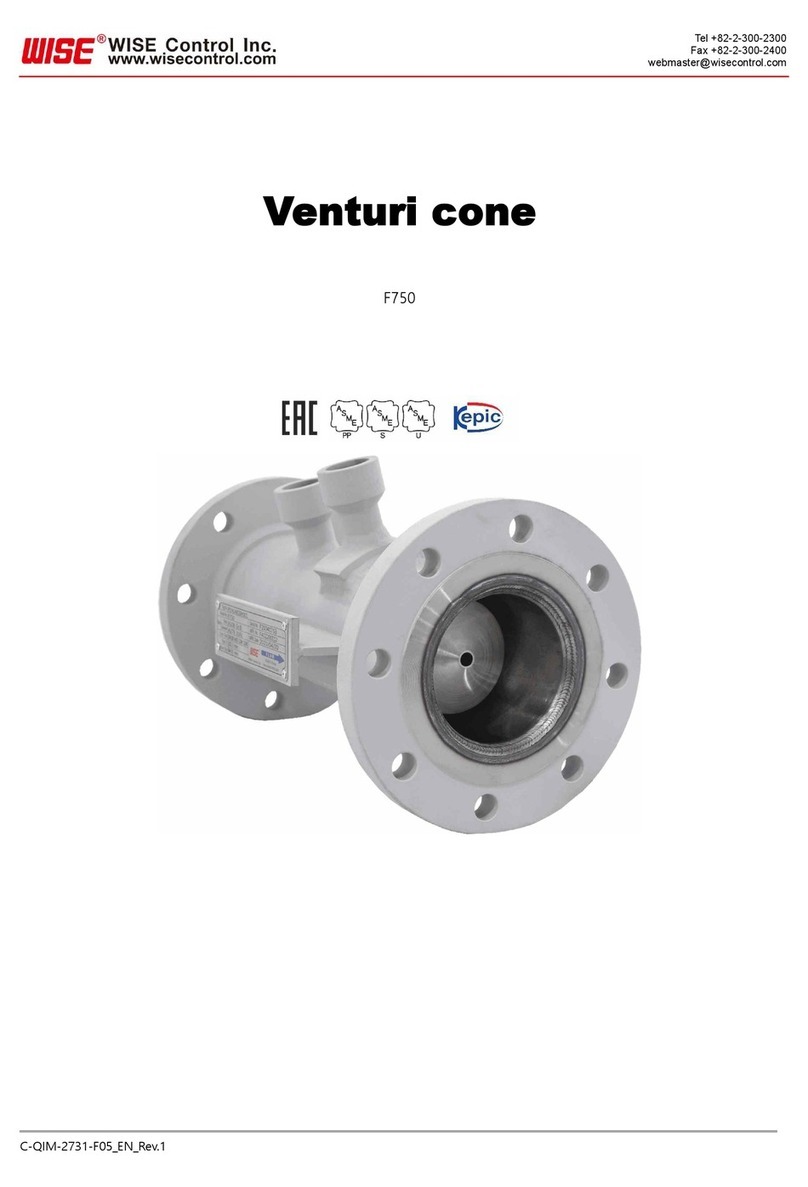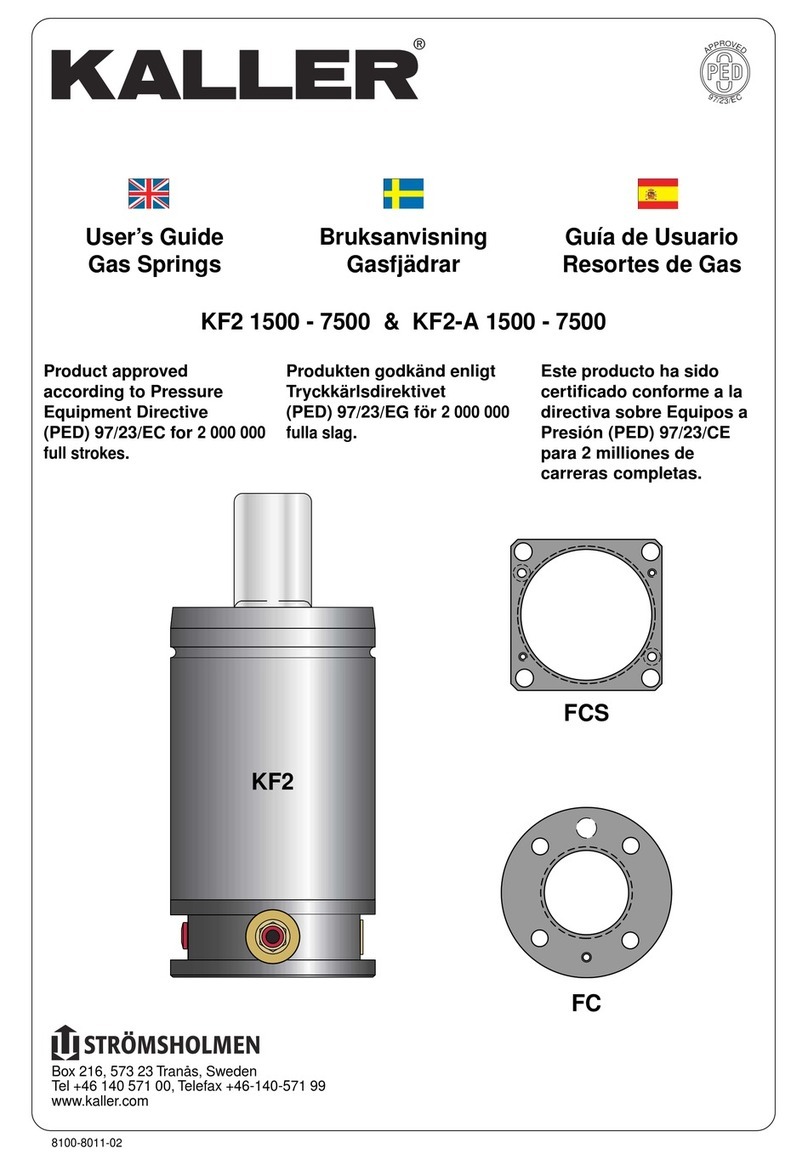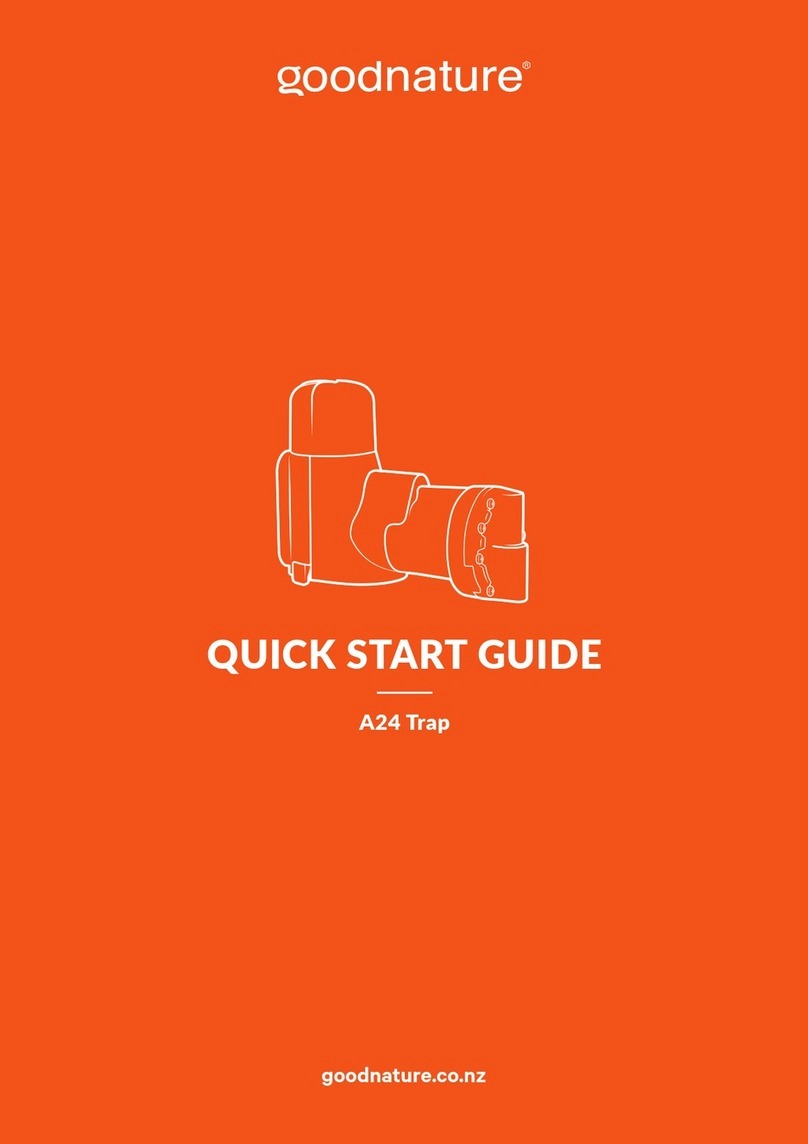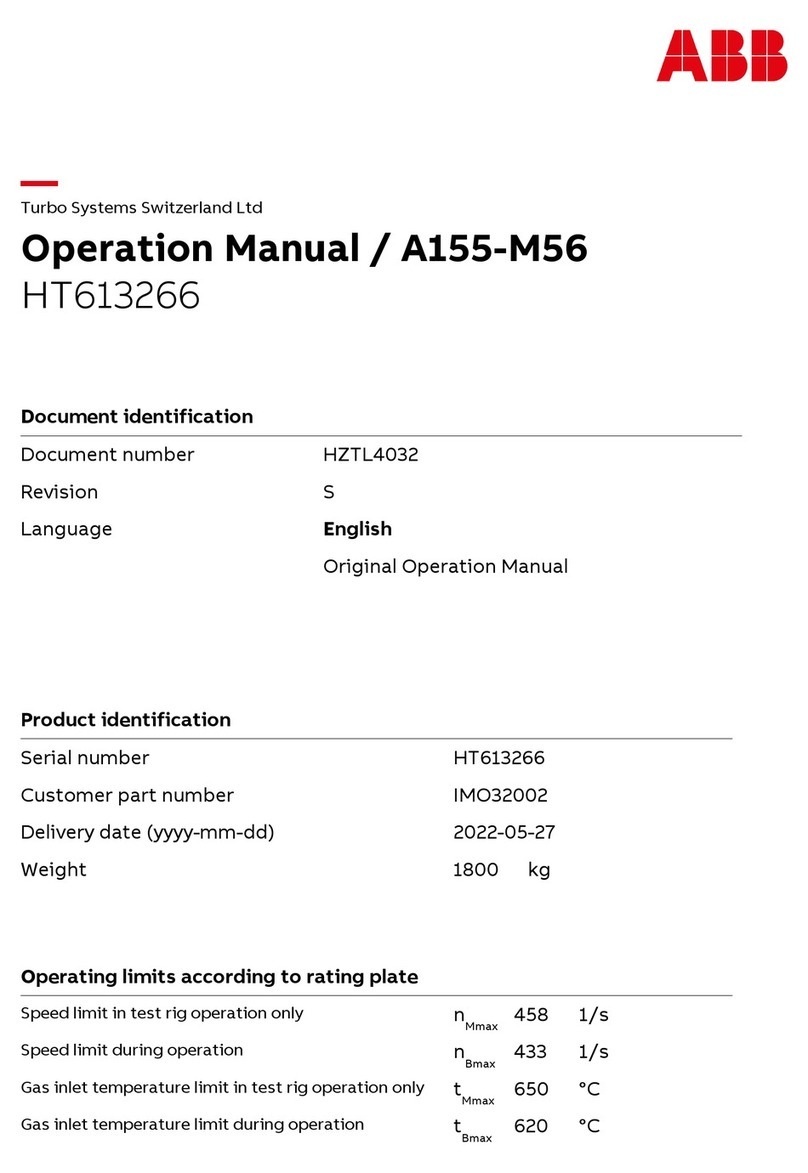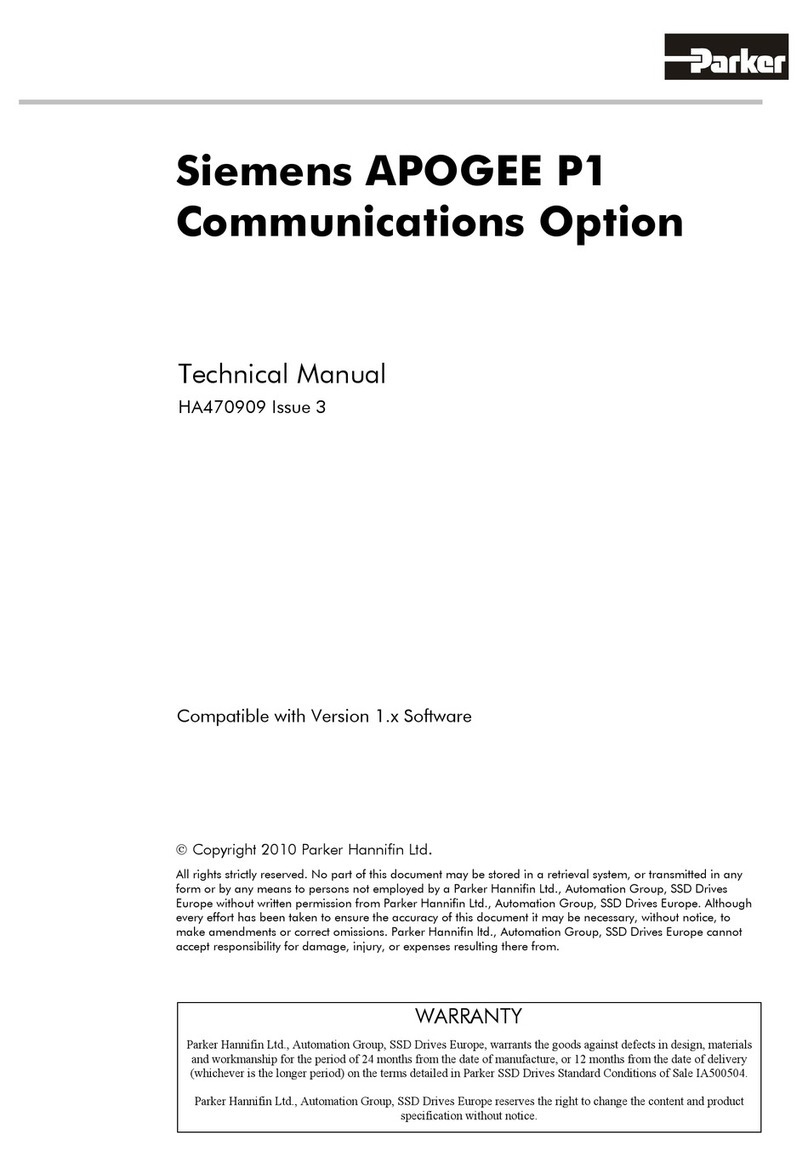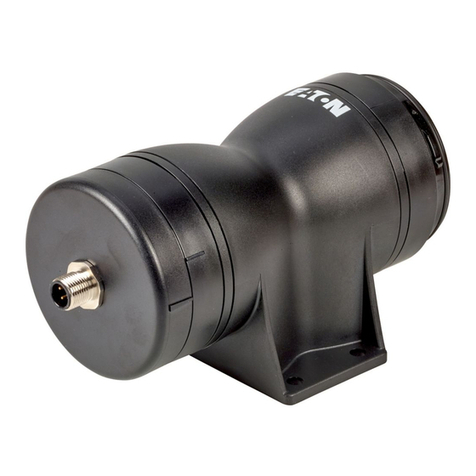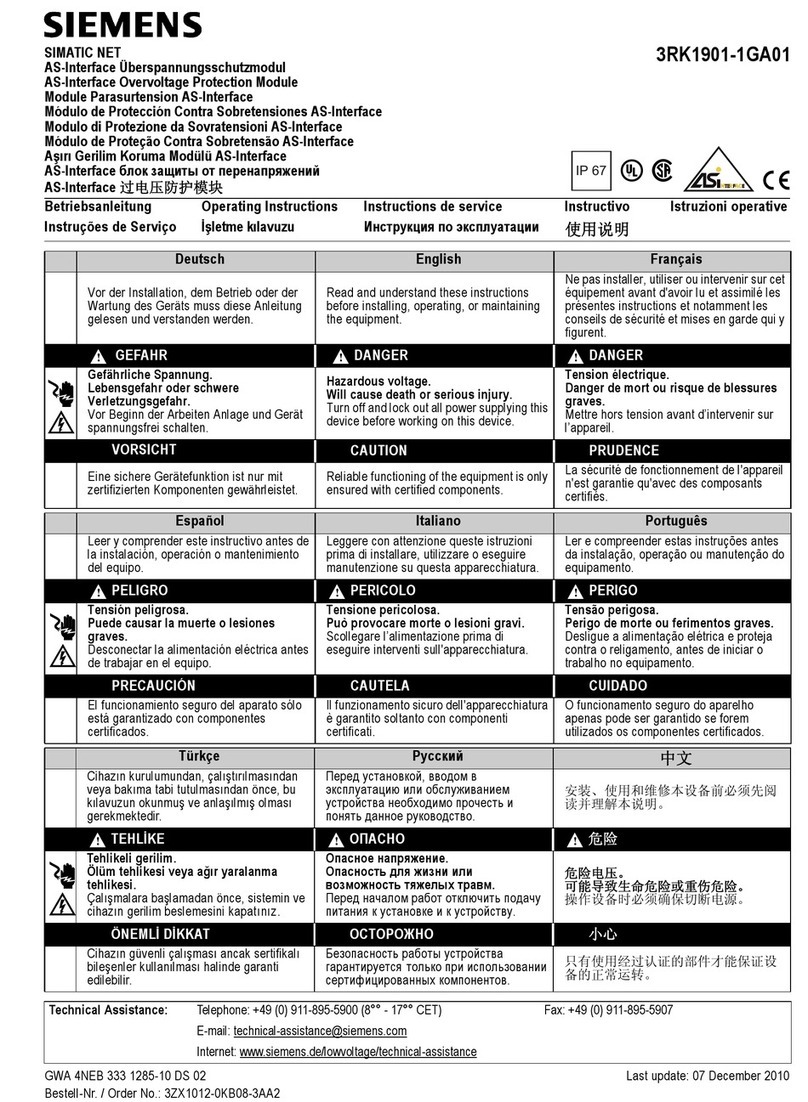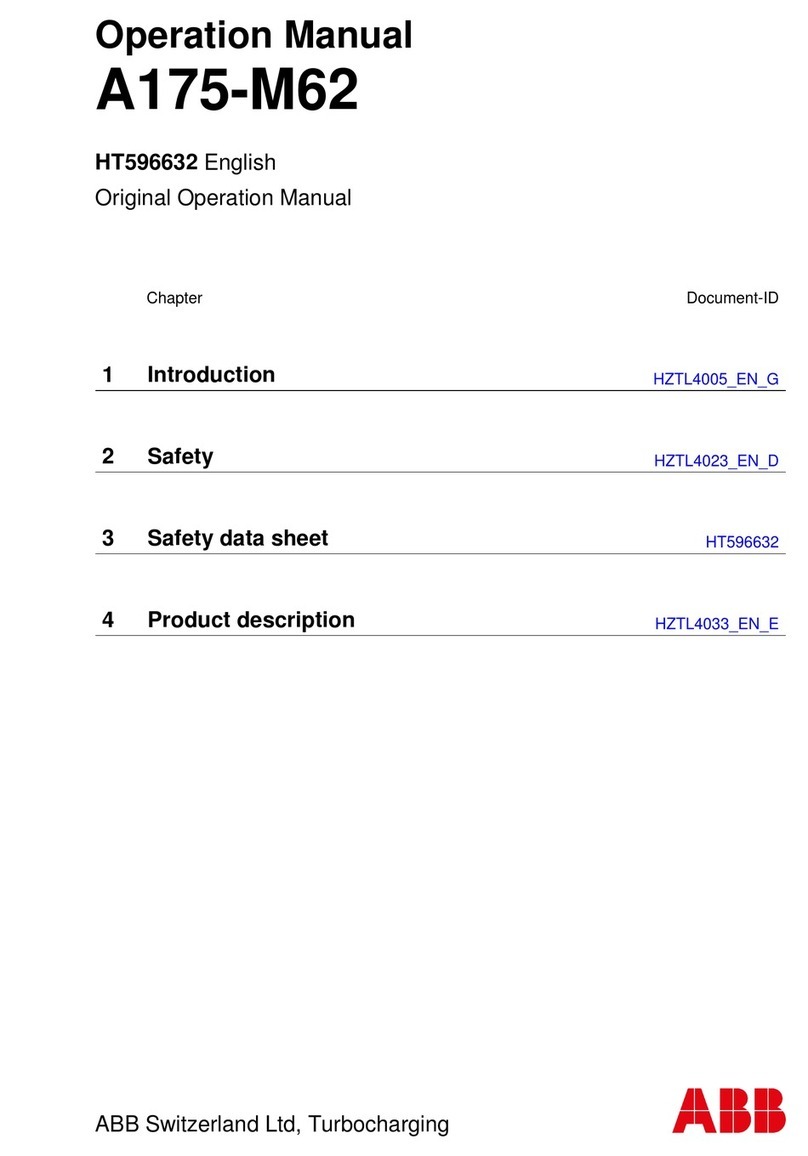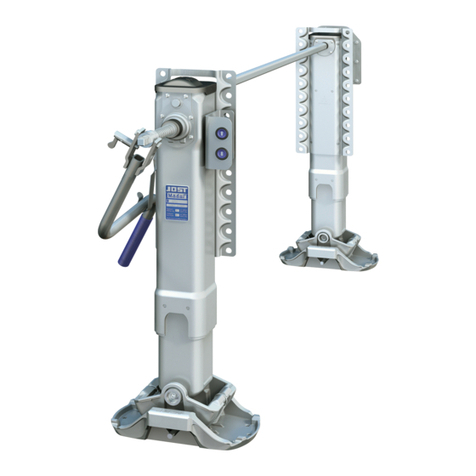Viking VFT User manual

Bladder Tank Model VFT & FT
Installation, Operation And Maintenance Manual
(Foam Concentrate Inside The Bladder)
March 14, 2016
F_032216 16.1 | TM1.3.1.1/14032016/en


BLADDER TANK MODEL VFT & FT
INSTALLATION, OPERATION AND
MAINTENANCE MANUAL
(
foam concentrate inside the bladder
)
TECHNICAL
MANUAL
F_032216 16.1 | TM1.3.1.1/14032016/en
The Viking Corporation, 210 N Industrial Park Drive, Hastings MI 49058
Telephone: 269-945-9501 Technical Services: 877-384-5464 Fax: 269-818-1680 Email: [email protected]
VISIT THE VIKING WEBSITE FOR THE LATEST EDITION OF THIS TECHNICAL MANUAL
Page 3 of 35
THIS DOCUMENT PROVIDES IMPORTANT SAFETY INSTRUCTIONS
The user is strongly recommended to read and to follow carefully the instructions contained in this manual to prevent damage to
people and objects.
This document must be kept in a safe place together with all the technical documentation relevant to the materials purchased
(certicates, test report, etc...)
All the information contained in this manual is relevant to the description and operation of the whole equipment. For more details
regarding the sub-components, please make reference to the relevant manufacturer’s documentation.
DISCLAIMER
Viking declines any responsibility due to non-observance of these instructions, improper use of the equipment or use outside its
design limitation.
The compliance, partial or full, with the prescriptions and the information contained in this manual does not relieve anyone who
is in charge to install, to operate or to maintain in full efciency the bladder tank from the responsibility due to improper actions or
inexperience.
Viking is not responsible for the damage and any other consequence caused by a lack of skill of the personnel involved with the
with
bladder tank’s operation.
It is the sole purpose of this document to provide operating personnel with a basic understanding of the equipment and of its
components. In order to maintain the bladder tank and its accessories at a high level of efciency, all operators and maintenance
crew are urged to carefully read this instruction manual and keep it readily available for future reference.
This manual does not provide instructions on the procedures for installation, operation and maintenance that are specically in
place at the installation site. In addition, this manual does not provide instructions on the procedures, installation, operation and
maintenance of the re protection system the bladder tank is part of.
The user must be informed on the local regulations and laws and get in contact with the local authorities to obtain all required
permissions and approvals for operation within the installation plant.
In case any of the instructions provided in this manual are not completely understood by anybody involved in the installation,
operation and maintenance of the bladder tank manufactured by Viking, this must be reported to Viking before making any further
actions.
NOTICE

BLADDER TANK MODEL VFT & FT
INSTALLATION, OPERATION AND
MAINTENANCE MANUAL
(
foam concentrate inside the bladder
)
TECHNICAL
MANUAL
F_032216 16.1 | TM1.3.1.1/14032016/en
The Viking Corporation, 210 N Industrial Park Drive, Hastings MI 49058
Telephone: 269-945-9501 Technical Services: 877-384-5464 Fax: 269-818-1680 Email: [email protected]
VISIT THE VIKING WEBSITE FOR THE LATEST EDITION OF THIS TECHNICAL MANUAL
Page 4 of 35
GENERAL INDEX
SECTION 1
–
SAFETY PRECAUTIONS...........................................................................................................................
...................
5
1.1 Safety and warning notices...................................................................................................................................................
...........
5
1.2 General notes for operator safety..............................................................................................................................
...................
...5
1.3 Safety during maintenance...............................................................................................................................................................5
SECTION 2 – SCOPE OF THE MANUAL.......................................................................................................................................
.....
.6
2.1 Purpose of the manual.........................................................................................................................................................
............
6
2.2 Precautions to extend the equipment lifetime...................................................................................................................................6
2.3 Environment........................................................................................................................................................................
.............
6
SECTION 3 – EQUIPMENT DESCRIPTION..................................................................................................................................
.......
7
3.1 Bladder tank description and principle of operation.................................................................................................................
........
7
3.2 Bladder tank design data......................................................................................................................................................
........
...7
3.3 Bladder layout....................................................................................................................
............................................................
9
3.4 The safety thermal relief valve................................................................................................................................
......................
.10
SECTION 4 – MATERIAL TRANSPORTATION, RECEPTION AND STORAGE................................................................................11
4.1 Checks on the bladder tank at the reception..................................................................................................................................11
4.2 Storage recommendation before installation................................................................................................
..........................
......11
SECTION 5 – BEFORE THE INSTALLATION..................................................................................................................
..............
.
..12
5.1 Installation place requirements.............................................................................................................................................
........
.12
SECTION 6 – INSTALLATION REQUIREMENTS...............................................................................................................................13
6.1 General prescriptions...............................................................................................................................................
......................
13
6.2 System (primary) relief valve..........................................................................................................................................................14
6.3 Installation of the bladder tank................................................................................................................................
.......................
14
SECTION 7 – BLADDER TANK FIRST FILLING................................................................................................................................15
7.1 Separation bladder.............................................................................................................................................................
..........
..15
7.2 Before the rst lling.......................................................................................................................................................................16
7.3 Bladder tank rst lling........................................................................................................................................................
..........
.17
7.4 Level indicator setup.......................................................................................................................................................................23
SECTION 8 – BLADDER TANK COMMISSIONING AND START-UP.................................................................................................24
SECTION 9 – FOAM CONCENTRATE LEVEL MEASUREMENT.......................................................................................................25
SECTION 10 – PERIODIC MAINTENANCE.........................................................................................................
............................
..27
10.1 Periodic maintenance frequency.........................................................................................................................................
....
.....27
10.2 General requirements..................................................................................................................................
..............................
27
10.3 Maintenance Schedule
......................................................................................................................................
.........................
28
10.4 Bladder connections - bolts tightening torque adjustment................................................................................................
............
29
10.5 Check of bladder integrity......................................................................................................................
.....................................
30
10.6 Bladder replacement..............................................................................................................................................
...........
........
..31
10.7 Extraordinary maintenance....................................................................................................................................
.....................
.35

BLADDER TANK MODEL VFT & FT
INSTALLATION, OPERATION AND
MAINTENANCE MANUAL
(
foam concentrate inside the bladder
)
TECHNICAL
MANUAL
F_032216 16.1 | TM1.3.1.1/14032016/en
The Viking Corporation, 210 N Industrial Park Drive, Hastings MI 49058
Telephone: 269-945-9501 Technical Services: 877-384-5464 Fax: 269-818-1680 Email: [email protected]
VISIT THE VIKING WEBSITE FOR THE LATEST EDITION OF THIS TECHNICAL MANUAL
Page 5 of 35
SECTION 1 – SAFETY PRECAUTIONS
1.1 Safety and Warning Notices
Throughout this publication, DANGER, WARNING and CAUTION signs may be used to alert the installer/user to special
instructions concerning a particular service or operation that may be hazardous if performed incorrectly or carelessly. OBSERVE
THEM CAREFULLY.
Safety notices are introduced by signal words which indicate the degree of danger.
These “Safety Notices” cannot eliminate by themselves the hazards that they signal. Strict compliance to these special instructions
plus “common sense” operations are major accident prevention measures.
1.2 General notes for operator safety
The bladder tanks manufactured by Viking are designed to work under pressure and to handle re ghting foam concentrates. Both
these two conditions represent a potential risk for people and property.
For the appropriate operation when the tank is under pressure, please refer to the instructions that follow in this manual. For safe
foam concentrate handling and rst aid measures, please refer to the applicable parts of the concentrate’s MSDS.
1.3 Safety during maintenance
Maintenance staff MUST carry out a risk assessment prior to performing any activity on the bladder tank. Particular care must be
paid to those actions where the lowering or removal of safety measures may be required (e.g. temporary removal of the thermal
relief valve, etc…).
The personnel in charge of the maintenance must be equipped with all the individual protection equipment to act safely and in
accordance with all the applicable laws and rules. In particular:
1. Safety clothes must be worn
2. The work tools must be according to the law and in good condition
DANGER
WARNING
CAUTION
NOTICE
INFORMATION
Indicates an imminently hazardous situation. If not avoided, death or serious injury will result.
Indicates a potentially hazardous situation. If not avoided, death or serious injury could result.
Indicates a potentially hazardous situation. If not avoided, slight or minor injuries could result.
Indicates a potentially harmful situation. If not avoided, the system or something in its surroundings
may be damaged.
This symbol emphasizes useful tips and recommendations as well as in formation for efcient
and trouble-free operation.
CAUTION
WARNING

BLADDER TANK MODEL VFT & FT
INSTALLATION, OPERATION AND
MAINTENANCE MANUAL
(
foam concentrate inside the bladder
)
TECHNICAL
MANUAL
F_032216 16.1 | TM1.3.1.1/14032016/en
The Viking Corporation, 210 N Industrial Park Drive, Hastings MI 49058
Telephone: 269-945-9501 Technical Services: 877-384-5464 Fax: 269-818-1680 Email: [email protected]
VISIT THE VIKING WEBSITE FOR THE LATEST EDITION OF THIS TECHNICAL MANUAL
Page 6 of 35
SECTION 2 – SCOPE OF THE MANUAL
2.1 Purpose of the manual
The scope of this manual is to provide adequate information and instruction to bladder tank users, maintenance staff and any other
qualied personnel who is involved with and authorized to operate and maintain the unit. Attention is focused on the potential for the
risk of damage, injury or death that may occur due to the lack of compliance with the instructions given in this document.
This manual details lling and the initial start-up operation of the bladder tank plus recommended periodic maintenance activities
2.2 Precautions to extend the equipment lifetime
All installation, commissioning, operation and maintenance activities must be carried out by personnel who are qualied and
authorized by the system’s owner or manager. The personnel responsible for these activities must proceed only after reading and
fully understanding this manual.
As the bladder tanks manufactured by Viking have been designed, tested and approved by third party organizations including the
durability and performance of the original accessories installed - only original spare parts and consumables must be used when
replacements are required. The use of non-original spare parts may result in an unsafe or poor performance of the bladder tank
and decrease its overall lifetime usage. Use of non-original spare parts automatically expires the warranty clause of the supplied
equipment. This prescription applies, in particular, to the separation bladder between water and foam concentrate and to the foam
concentrate itself
2.3 Environment
The bladder tank user is responsible for the appropriate disposal of all parts that have to be replaced, during the routine and
special maintenance, according to local applicable laws and rules. In particular the foam concentrate contained in the tank and the
replacement seals and separation bladder.
Care must be taken when ow and mixing tests are carried out at the installation site, in such a way not to threaten the
environment. Please always refer to the foam concentrate’s MSDS indications concerning the environmental considerations prior to
the handling of foam concentrate and water-foam solution
NOTICE
NOTICE

BLADDER TANK MODEL VFT & FT
INSTALLATION, OPERATION AND
MAINTENANCE MANUAL
(
foam concentrate inside the bladder
)
TECHNICAL
MANUAL
F_032216 16.1 | TM1.3.1.1/14032016/en
The Viking Corporation, 210 N Industrial Park Drive, Hastings MI 49058
Telephone: 269-945-9501 Technical Services: 877-384-5464 Fax: 269-818-1680 Email: [email protected]
VISIT THE VIKING WEBSITE FOR THE LATEST EDITION OF THIS TECHNICAL MANUAL
Page 7 of 35
SECTION 3 – EQUIPMENT DESCRIPTION
3.1 Bladder tank description and principle of operation
The Viking bladder tank stores foam concentrate inside the bladder. When used in conjunction with the Viking Ratio Controller it
proportions the foam concentrate accurately into the water stream. The outer shell of the bladder tank is pressurized by the system
water supply then during extinguishing system operation; foam concentrate is squeezed out to the ratio controller. Simultaneously,
as water ows through the venturi area of the ratio controller, a metered pressure drop also draws foam concentrate into the system
water creating a foam solution mixed to the appropriate ratios. This solution then ows through the system pipework and out of the
open sprinklers, nozzles or other discharge devices.
The pressure tank is manufactured either according to ASME Sec. VIII Div. 1 or EN13445 design codes. Please check the
equipment nameplate for the code relevant to your bladder tank.
3.2 Bladder tank design data
As a pressure vessel, the bladder tank supplied by Viking can be manufactured according to different design codes - see previous
section - as indicated in the identication nameplate placed on the tank’s shell.
Depending on the requirements of the project, the tank design can additionally be validated as compliant with the European
Pressure Equipment Directive 97/23/EC. This requirement shall be specied at the Ordering stage. When the Viking bladder tank is
manufactured according to the standard EN-13445 “Unred pressure vessels”, this is also compliant to the Directive 97/23/EC.
The following design data applies to standard bladder tanks of volume ranging from 1,000 to 20,000 liters:
When validated as compliant to Directive 97/23/EC, all the above bladder tanks are CE marked.
Table 3.2.1: Design data
Internal volume See nameplate (from 1,000 litres to 20,000 litres)
Design pressure Ps 12.1 barg (175 psig) or 16 barg (232 psig)
Minimum/maximum metal design temperature Ts -10 °C, +50 °C
Hydraulic test pressure ASME VIII Div.1:
ASME VIII Div.1 + PED:
EN 13445:
1.3 x Ps
1.43 x Ps
1.43 x Ps (c(*)=0,85) or
2.20 x Ps (c(*)=0,70)
Corrosion thickness 0,0 mm
Fluid / physical state Water-foam concentrate / Liquids
Fluid group (Art. 9 of 97/23/EC, if applicable) Gr. 2
Category (Annex II of 97/23/EC, if applicable) I
Evaluation form (Annex III of 97/23/EC, if applicable) A
(*) C is dened as Welding Joint Efciency coefcient as reected by the design calculation

BLADDER TANK MODEL VFT & FT
INSTALLATION, OPERATION AND
MAINTENANCE MANUAL
(
foam concentrate inside the bladder
)
TECHNICAL
MANUAL
F_032216 16.1 | TM1.3.1.1/14032016/en
The Viking Corporation, 210 N Industrial Park Drive, Hastings MI 49058
Telephone: 269-945-9501 Technical Services: 877-384-5464 Fax: 269-818-1680 Email: [email protected]
VISIT THE VIKING WEBSITE FOR THE LATEST EDITION OF THIS TECHNICAL MANUAL
Page 8 of 35
For standard bladder tanks with volume from 25 to 775 liters, the following data table applies:
All tanks veried in compliance with Directive 97/23/EC are CE marked with the following exceptions
(Art. 3, Para. 3 of the aforementioned Directive):
• Tanks rated 12.1 bar with volumes equal or lower than 800 liters
• Tanks rated 16.0 bar with volumes equal or lower than 600 liters
The bladder tanks manufactured by Viking are designed taking into account the following:
1. maximum expected pressure at the design condition and at the hydraulic test condition
2. maximum temperature at the design condition and at the hydraulic test condition
3. static pressure of the uid (due to the bladder tank height)
4. stress due to handling (lifting lugs verication)
5. stress on the supporting legs
The design of the bladder tank supplied by Viking does not normally take in consideration, if not otherwise requested on the
Purchaser Order:
6. unstable uid decomposition (not expected with water and foam concentrate)
7. external re
8. corrosion allowance
9. stress due to the wind (the bladder tank shall be placed in a protected area unless it is calculated according to the actual
wind site conditions)
10. seismic stresses (the bladder tank shall be placed in a non-seismic area unless it is calculated according to the actual site
conditions)
11. stresses due to loads on the bladder tank’s nozzles (there are to be avoided, see below)
Table 3.2.2: Design data
Internal volume See nameplate (from 25 litres to 775 litres)
Design pressure Ps 12.1 barg (175 psig) or 16 barg (232 psig)
Minimum/maximum metal design temperature Ts -10 °C, +50 °C
Hydraulic test pressure ASME VIII Div.1:
ASME VIII Div.1 + PED:
EN 13445:
1.3 x Ps
1.43 x Ps
1.43 x Ps (c(*)=0,85) or
2.20 x Ps (c(*)=0,70)
Corrosion thickness 0,0 mm
Fluid / physical state Water-foam concentrate / Liquids
Fluid group (Art. 9 of 97/23/EC, if applicable) Gr. 2
Category (Annex II of 97/23/EC, if applicable) N/A (Art. 3, Par. 3)
Evaluation form (Annex III of 97/23/EC, if applicable) N/A (Art. 3, Par. 3)
(*) C is dened as Welding Joint Efciency coefcient as reected by the design calculation

BLADDER TANK MODEL VFT & FT
INSTALLATION, OPERATION AND
MAINTENANCE MANUAL
(
foam concentrate inside the bladder
)
TECHNICAL
MANUAL
F_032216 16.1 | TM1.3.1.1/14032016/en
The Viking Corporation, 210 N Industrial Park Drive, Hastings MI 49058
Telephone: 269-945-9501 Technical Services: 877-384-5464 Fax: 269-818-1680 Email: [email protected]
VISIT THE VIKING WEBSITE FOR THE LATEST EDITION OF THIS TECHNICAL MANUAL
Page 9 of 35
3.3 Bladder tank layout
The layout and the position of the accessories of the bladder tank are shown in gure 3.3.1.
Filling Device
(Optional)
Filling Device
(Optional)
Table 3.3.2: Normal Operating Valve Positions
Item Description Normal Valve Operating Position
Automatic System Manual System
1 Bladder Tank N/A N/A
2 Water Vent Valve Normally Closed Normally Closed
3 Safety Thermal Relief Valve Automatic – Tamper Proof Automatic – Tamper Proof
4 Foam Concentrate Vent Valve Normally Closed Normally Closed
5Filling Vent Valve (Optional) Maintenance Only Maintenance Only
6Filling Pressure Gauge 1-10 kpa (Optional) Maintenance Only Maintenance Only
7Water Filling/Drain Valve Normally Closed Normally Closed
8Foam Concentrate Filling/Drain Valve Normally Closed Normally Closed
9Concentrate Level Indicator Drain Valve Normally Closed Normally Closed
10 Concentrate Level Indicator Normally Closed Normally Closed
11 Water Shut Off Valve Normally Open Normally Closed
12 Foam Concentrate Shut Off Valve Normally Open Normally Closed
Figure 3.3.1: bladder tank arrangement

BLADDER TANK MODEL VFT & FT
INSTALLATION, OPERATION AND
MAINTENANCE MANUAL
(
foam concentrate inside the bladder
)
TECHNICAL
MANUAL
F_032216 16.1 | TM1.3.1.1/14032016/en
The Viking Corporation, 210 N Industrial Park Drive, Hastings MI 49058
Telephone: 269-945-9501 Technical Services: 877-384-5464 Fax: 269-818-1680 Email: [email protected]
VISIT THE VIKING WEBSITE FOR THE LATEST EDITION OF THIS TECHNICAL MANUAL
Page 10 of 35
3.4 The safety thermal relief valve
The standard design pressure - and maximum working pressure - of Viking bladder tanks is 175 psig (12.1 barg) unless otherwise
stated. Please always refer to the bladder tank nameplate placed on the shell to determine the design pressure. It is the
responsibility of the end user to provide a primary pressure regulating / relief valve, of suitable set-point and capacity, resulting
from a specic calculation, to protect the tank from rapid over-pressurization. Details of the entire re protection systems design
must be known, such as water pressure and ow capacity, to size this primary pressure regulating/relief valve.
Thermal expansion of foam concentrate and water inside the tank can also generate a pressure exceeding the rated capacity. This
slow but steady pressure increase could result in problems ranging from leaks at threaded or anged connections to a serious
physical damage of the bladder or pressure tank. For this reason a safety valve, called the thermal relief valve, is installed on all
Viking bladder tanks (see item no. 3 in gure 3.3.1.). This valve is not intended to protect the tank from an overpressure
generated by the re ghting network system, as the latter depends on the pump(s) owrate, total pump(s) head and on the
static (geodetic) pressure arising from the bladder tank elevation. This data is normally unknown to Viking and therefore outside
Viking’s scope of work.
The thermal relief valve’s only function is to prevent an over-pressurization which the isolated and self-standing bladder tank may
experience due to the volume change of its content. The thermal relief valve is provided with a locking seal that prevents pressure-
setting modication after the equipment has been despatched from the Viking factory. For any technical detail on the thermal relief
valves, please refer to the data sheet and certicates supplied by Viking.
To prevent or minimise the effect of thermal expansion, which may result in water discharge from the thermal relief valve, it is
recommended to:
1. Avoid lling the tank with cold concentrate. If possible, allow the concentrate to warm-up to room temperature and, in any case,
do not ll the bladder tank above its nominal volume if temperature increases are envisaged (the bladder tank has an effective
volume higher than the nominal. This allowance permits the foam concentrate expansion to be relieved by the thermal relief
valve placed on the water side).
2. Install a sun canopy to protect tanks installed outdoors.
3. Avoid tank exposure to high temperatures.
To prevent unwanted water discharge on the surface of the bladder tank, which may result, after a period, in a painting damage, the
thermal relief valve should be preferably piped to a drain. If piped, make sure that the piping does not limit the discharge capacity
of the thermal relief valve and consider the use of a drain cup or sight glass to give a visual indication of any thermal relief valve
activation

BLADDER TANK MODEL VFT & FT
INSTALLATION, OPERATION AND
MAINTENANCE MANUAL
(
foam concentrate inside the bladder
)
TECHNICAL
MANUAL
F_032216 16.1 | TM1.3.1.1/14032016/en
The Viking Corporation, 210 N Industrial Park Drive, Hastings MI 49058
Telephone: 269-945-9501 Technical Services: 877-384-5464 Fax: 269-818-1680 Email: [email protected]
VISIT THE VIKING WEBSITE FOR THE LATEST EDITION OF THIS TECHNICAL MANUAL
Page 11 of 35
SECTION 4 – MATERIAL TRANSPORTATION, RECEPTION AND STORAGE
4.1 Checks on the bladder tank at the reception
Bladder tanks manufactured by Viking are supplied on non stackable pallets suitable for inland (truck) transportation, if not
otherwise requested on the purchase order. This type of packaging is suitable to avoid damage to the equipment if handled correctly
during transit. Other types of packing can be provided on request (e.g. sea freight or for other expected severe handling conditions).
When received at the destination the bladder tank must be checked for signs of damage that may have occurred during
transportation and unloading operations. Damage to the pressure portion of the bladder tank, the tank’s shell, proportioning device
and interconnecting piping (if tted) - may result in liquid leaks, liquid spray jets or even structural failures. Such damage has to be
reported to Viking immediately for risk assessment.
Any other damage that, based on the judgment of the installer/end user, is supposed to potentially result in a failure or that may
affect the performance of the bladder tank must be promptly highlighted to Viking and rectied before the start-up according
to the manufacturer’s indications.
Viking is not responsible for damage due to equipment mishandling during the transportation, unloading and positioning stages
(Viking is responsible only when in charge for the transportation). Bladder tanks must be handled by skilled and authorized
personnel only who are competent in the planning and execution of such operations using appropriate lifting machinery. All
applicable Viking equipment is supplied with eyebolts which shall be used for lifting operations.
4.2 Storage recommendations before installation
The bladder tanks produced by Viking shall preferably be stored in a sheltered or indoor area before installation. The storage
temperature should not be outside the range of +5 °C; +30 °C for a prolonged period of time. This prescription is aimed to preserve
the bladder from an excessive thermal stress before he tank is lled with water and foam concentrate.
In case the storage temperature is above + 30 °C, either permanently or for a prolonged period of time (this may happen when the
bladder tank is stored outdoor under direct sun exposure or because of the ambient air temperature itself); the tank must be lled
with a suitable quantity of water to thermally insulate the bladder. This amount equals to 20% of the tank capacity inside the bladder
and 80% of the tank capacity outside of the bladder. This operation must be done to avoid overheating of the bladder at the regions
where contact with the tank’s metallic shell occurs as the circumstance may lead to bladder damage. In no scenario should the
temperature of the bladder be permanently above 30 °C.
To avoid bladder ruptures whilst lling the tank with water, always ensure that the net unbalanced pressure of the bladder does
not exceed 1 kPa (refer to section 7. for details). In case the storage temperature is below +5 °C but higher than -30 °C, either
permanently or for a prolonged period of time, the user has to ensure that the atmosphere in contact with the bladder is dry to avoid
icing - that may result in bladder damage.
For storage temperature below -30 °C, please contact Viking
WARNING
NOTICE

BLADDER TANK MODEL VFT & FT
INSTALLATION, OPERATION AND
MAINTENANCE MANUAL
(
foam concentrate inside the bladder
)
TECHNICAL
MANUAL
F_032216 16.1 | TM1.3.1.1/14032016/en
The Viking Corporation, 210 N Industrial Park Drive, Hastings MI 49058
Telephone: 269-945-9501 Technical Services: 877-384-5464 Fax: 269-818-1680 Email: [email protected]
VISIT THE VIKING WEBSITE FOR THE LATEST EDITION OF THIS TECHNICAL MANUAL
Page 12 of 35
SECTION 5 – BEFORE INSTALLATION
5.1 Installation place requirements
The bladder tank shall not be installed in areas:
1. Too close to other equipments/objects that may prevent a safe access for equipment’s operation and periodic inspections.
2. Where it is subject to heat sources that may affect its safety, performance or durability.
3. Close to ammable materials or chemicals that can generate a re concern to the tank.
4. Not protected against collision or tampering.
5. Where vibrations can generate loads on the legs/saddles, tank’s nozzles and interconnecting piping (in case of vibration,
suitable damping method shall be put in place).
6. Where a potentially explosive area is present, unless supplied in the ATEX version.
7. Where wind loads exceed the calculated limits.
8. Where seismic loads exceed the calculated limits.
9. Where the corrosion due to the atmosphere is more severe than that the painting cycle is designated to withstand (e.g. where
aggressive acids like H2S are present);
10. Where the temperature is outside the range (-10 °C; +50 °C) referring to the metal shell and (+5°C-+30 °C) referring to the
water/foam concentrate;
In case of temperature below +5 °C:
a. the foam concentrate must be of a suitable freezing point rating.
b. the compensation water between the bladder and the tank shell must be mixed with acceptable anti-freeze compounds at a
suitable mixing ratio whilst ensuring the tank contains the anti-freeze solution permanently. Please contact Viking for details on
the anti-freeze compounds compatible with the bladder material and to be instructed on the appropriate mixing ratio.
Most of the anti-freeze solution are ammable and can cause irritation by contact on eye and skin. Please always refer to the
relevent MSDS
WARNING
CAUTION

BLADDER TANK MODEL VFT & FT
INSTALLATION, OPERATION AND
MAINTENANCE MANUAL
(
foam concentrate inside the bladder
)
TECHNICAL
MANUAL
F_032216 16.1 | TM1.3.1.1/14032016/en
The Viking Corporation, 210 N Industrial Park Drive, Hastings MI 49058
Telephone: 269-945-9501 Technical Services: 877-384-5464 Fax: 269-818-1680 Email: [email protected]
VISIT THE VIKING WEBSITE FOR THE LATEST EDITION OF THIS TECHNICAL MANUAL
Page 13 of 35
SECTION 6 – INSTALLATION REQUIREMENTS
6.1 General Guidance
The installer and the user of the equipment supplied by Viking have the responsibility to ensure that the following points
are fullled:
1. The installation must be carried out by qualied and authorized personnel according to the applicable local regulations and
laws. Refer to appropriate Installation Standards (i.e. NFPA, VdS, LPCB, etc.) and / or FM Global Property Loss Prevention
Data Sheet 4-12, Foam-Water Sprinkler Systems.
2. Any safety measure to prevent accidents must be taken according to the applicable legislation.
3. The bladder tank and accessories have to be connected to the piping system in such a way that the connections are not
subject to stresses beyond the design limit.
4. The supplied equipment installed in systems where the maximum working pressure does not exceed the bladder tank’s design
pressure (ratio controller and accessories included).
5. The bladder tank must be connected to the system with approved methods (threads, anges, grooved ttings, etc…) whose
pressure rating is not lower than the system’s one;
6. The installation works must be accomplished avoiding damage to the equipment supplied by Viking. In case damage occurs,
a thorough investigation must be made in order to assess the potential consequences for the safety and the re protection
operation. Viking must be contacted.
7. Do not remove, alter, exchange or tamper with the original thermal relief valve supplied by Viking.
8. Stop valves, or any other device limiting the owrate capacity, shall not be placed between the tank and the pressure relief
devices (unless calculated in the system design).
9. Drains and vents must be positioned in such a way not to create threats or hazard to personnel. If the safety thermal relief
valve drain is piped, care must be taken to prevent that the capacity is not reduced.
10. All foam concentrate and foam solution pipe shall be designed and installed in accordance with the piping section of NFPA 11
and/or FM Global Property Loss Prevention Data Sheet 4-12, Foam-Water Sprinkler Systems.
11. Once the installation is completed, a nal inspection must be carried out to ensure that the installation drawings have
been properly fullled and that the quality of work is satisfactory. Non-conformities must be recorded and rectied prior to
commencing with the commissioning and start-up stages.
WARNING

BLADDER TANK MODEL VFT & FT
INSTALLATION, OPERATION AND
MAINTENANCE MANUAL
(
foam concentrate inside the bladder
)
TECHNICAL
MANUAL
F_032216 16.1 | TM1.3.1.1/14032016/en
The Viking Corporation, 210 N Industrial Park Drive, Hastings MI 49058
Telephone: 269-945-9501 Technical Services: 877-384-5464 Fax: 269-818-1680 Email: [email protected]
VISIT THE VIKING WEBSITE FOR THE LATEST EDITION OF THIS TECHNICAL MANUAL
Page 14 of 35
6.2 System (primary) relief valve
The installer/owner has to ensure that the maximum working pressure of the system the bladder tank is connected to - as
determined at the equipment’s installation position - does not exceed the design pressure of the bladder tank. In case the maximum
working pressure exceeds, under any condition (including failure) the Viking bladder tank’s nameplate design value, a primary
safety valve or equivalent device to control the overpressure must be installed by the installer/owner/end user. This valve or
device must by sized so that its capacity is larger than the maximum uid overow responsible for the overpressure of the bladder
tank. The bladder tank safety valve shall not be considered in this calculation.
The pressure setting of the primary relief valve or equivalent pressure control device must be not higher than the design pressure of
the bladder tank. The valve(s) shall be of such design and construction so that the temporary peak overpressure at the bladder tank
is limited to a maximum 10% under any condition including system failure.
The installation position of the primary relief valve or equivalent pressure control device shall be determined based on the
applicable technical standards and good engineering practice. This should be upstream of the complete bladder tank arrangement
and not on the tank water connection pipework only. The operation of these devices shall not cause hazards to people and property.
If the drain port is piped, care must be taken that the safety device capacity is not lowered. Pressure indicators in addition to those
provided by Viking (that are factory installed on the bladder tank), must be placed throughout the system to adequately monitor the
pressure value.
The selection and installation of the primary relief valve or of an equivalent pressure control device is normally part of the nal
approval of the system and coded by the applicable legislation on this matter (e.g. for European installation, the Directive 97/23/EC
“Pressure Equipment Directive).
6.3 Installation of the bladder tank
The following precautions must be observed:
1. During the system installation it is essential to keep valves 11 & 12 closed (gure 3.3.1).
2. This will avoid that debris or test water/air can enter the tank before the pipework is ushed and tank lling / commissioning
procedures are due to commence.
3. Bladder tank positioning to the designated installation place must be made using the tank’s lifting lugs.
4. The installer/end user must securely x the tank to the ground with appropriate anchor bolts/rods designed to withstand the
loads determined by site conditions (wind, seismic, etc…).
5. The discharge port of the thermal relief valve (3), water drain valve (7), level indicator drain (9) and foam lling/drain connection
(8) could be piped to a suitable place as dened by the end user/installer.
6. In order to preserve the bladder tank over a long operation period and to avoid migration of the water-foam solution back to the
re water network, a stop valve, a Y-strainer and a check valve (in this order from the pump side to the bladder tank side) are
recommended to be installed upstream the proportioning device (if present).
WARNING
CAUTION

BLADDER TANK MODEL VFT & FT
INSTALLATION, OPERATION AND
MAINTENANCE MANUAL
(
foam concentrate inside the bladder
)
TECHNICAL
MANUAL
F_032216 16.1 | TM1.3.1.1/14032016/en
The Viking Corporation, 210 N Industrial Park Drive, Hastings MI 49058
Telephone: 269-945-9501 Technical Services: 877-384-5464 Fax: 269-818-1680 Email: [email protected]
VISIT THE VIKING WEBSITE FOR THE LATEST EDITION OF THIS TECHNICAL MANUAL
Page 15 of 35
SECTION 7 – BLADDER TANK FIRST FILLING
The bladder tank foam lling is a simple operation to perform if the instructions contained in this manual are carefully followed. The
lling process is a fundamental task determining the proper bladder tank performance when required to operate. Incorrect lling
may compromise the bladder’s lifetime or cause an immediate rupture. It is highly recommended that the installer/user contacts
Viking in case of doubts on the instructions shown in this manual. Viking is not responsible for any damage to the bladder if the
lling operation is not made by Viking.
7.1 Separation bladder
• Viking certies and guarantees, with release of a test certicate, that all the separation bladders have been subjected to a
pneumatic pressure test for integrity assessment.
• Viking guarantees the bladder integrity for one year starting from the delivery date;
• Viking guarantees the bladder against tearing or bursting only and exclusively if the lling operation is performed by Viking’s
employees or by Viking authorized personnel. The operator performing the lling will validate this activity and activate the
warranty covering the bladder by sending back to Viking the certicate of warranty duly undersigned.
• To avoid bladder damages the installation of a strainer upstream of the tank is recommended;
• To avoid damaging the bladder, DO NOT perform welding on the tank body.
CAUTION

BLADDER TANK MODEL VFT & FT
INSTALLATION, OPERATION AND
MAINTENANCE MANUAL
(
foam concentrate inside the bladder
)
TECHNICAL
MANUAL
F_032216 16.1 | TM1.3.1.1/14032016/en
The Viking Corporation, 210 N Industrial Park Drive, Hastings MI 49058
Telephone: 269-945-9501 Technical Services: 877-384-5464 Fax: 269-818-1680 Email: [email protected]
VISIT THE VIKING WEBSITE FOR THE LATEST EDITION OF THIS TECHNICAL MANUAL
Page 16 of 35
7.2 Before the rst lling
Before the lling operations can take place the installer/end user has to make sure that:
1. The installation of the bladder tank and the assembling to the owner’s system have been accomplished according to the design
documents, applicable standards and good engineering practice.
2. All the threads, anges and grooved ttings are tightened to the recommended values.
3. The safety devices have been properly selected and installed to preserve the bladder tank from overpressure.
4. The Concentrate Control Valve (if present) and relevant trim is properly connected. Please make reference to the CCV manual
for the connection of the trim to the system.
5. All the connecting piping has been thoroughly ushed to avoid debris getting into the bladder tank, proportioning device and
CCV trim (if present).
6. Instrumentation, such as the pressure gauges and the level indicator (10), are not damaged.
7. The safety valve seal is unimpaired.
8. The bladder tank is securely xed to the ground.
9. The bolts at the top and bottom anges holding the bladder are tightened at the design torque value (see Paragraph 10.4)
The bladder tank lling relies on a procedure which requires the use of some SPECIAL TOOLS. The following devices
MUST BE procured by the installer/user before the lling operation:
a) the lling device (gure 3.3.1, supplied as an optional by Viking) or an equivalent assembly with a 0-6 kPa range pressure
gauge;
b) Qty 1 x 25mm non-collapsible pick-up hose to t the lling pump. Length to cover the distance from the foam concentrate
containers. (The hose is supplied optionally by Viking with the manual lling pump).
c) Qty 1 x 25mm BSP male thread connection non-collapsible delivery hose to t the lling pump Length to cover the distance to
the bladder tank ll valve. (The hose is supplied optional by Viking with the manual lling pump).
d) Qty 1 water/concentrate lling pump (manual or electrical type). In case of an electrical pump the maximum recommended
owrate, to avoid excessive stress to the bladder, is 100 l/min. These pumps are supplied by Viking as an option.
e) Air compressor if a compressed air service is not available. In both cases the maximum recommended air owrate is
100 l/min and a suitable regulating device must be installed to prevent overpressure
NOTICE

BLADDER TANK MODEL VFT & FT
INSTALLATION, OPERATION AND
MAINTENANCE MANUAL
(
foam concentrate inside the bladder
)
TECHNICAL
MANUAL
F_032216 16.1 | TM1.3.1.1/14032016/en
The Viking Corporation, 210 N Industrial Park Drive, Hastings MI 49058
Telephone: 269-945-9501 Technical Services: 877-384-5464 Fax: 269-818-1680 Email: [email protected]
VISIT THE VIKING WEBSITE FOR THE LATEST EDITION OF THIS TECHNICAL MANUAL
Page 17 of 35
7.3 Bladder tank rst lling
The status of the Viking bladder tank’s relevant valves before the rst lling, making reference to gure 3.3.1, must be as described
table 7.3.1. Valve 5 and Gauge 6 are part of the temporary lling device previously described.
Table 7.3.1: valves condition before the bladder tank lling
Item Valve Name Status
2 Water vent valve Open
7Water lling/drain valve Open
8Concentrate lling/drain valve Closed
9 Concentrate level indicator drain valve Liquid Indicator Isolated from Tank (g. 7.3.3)
11 Water cut-off valve Closed
12 Concentrate cut-off valve Closed
- Concentrate Control Valve (CCV, if any) Open (priming trim depressurized)
Figure 7.3.3: Detail of the devices to be operated at the beginning of the lling
Figure 7.3.2: Detail of the devices to be operated at the beginning of the lling

BLADDER TANK MODEL VFT & FT
INSTALLATION, OPERATION AND
MAINTENANCE MANUAL
(
foam concentrate inside the bladder
)
TECHNICAL
MANUAL
F_032216 16.1 | TM1.3.1.1/14032016/en
The Viking Corporation, 210 N Industrial Park Drive, Hastings MI 49058
Telephone: 269-945-9501 Technical Services: 877-384-5464 Fax: 269-818-1680 Email: [email protected]
VISIT THE VIKING WEBSITE FOR THE LATEST EDITION OF THIS TECHNICAL MANUAL
Page 18 of 35
With reference to Figure 3.3.1. the bladder tank lling is made following the steps below:
1. Make sure that the three way valve (9) is set to put in communication the liquid indicator and the drain, so as to isolate the in-
strument from the bladder tank (see gure 7.3.3). (Pressure in excess of 0.6 bar applied to the level indicator may damage it).
2. Keep valves (11) and (12) closed and open the valves (2) and (7). Some water drainage from valve (7) is normal as all Viking
bladder tanks are hydrotested during the manufacturing process. The bladder tank’s condition at this stage is represented in
gure 7.3.2.
3. Remove the foam vent valve (4) and assemble the lling device in place of it (gure 3.3.1).
4. The air vent valve on the lling device (5) must be closed;
5. Connect a compressed air source having the features described in 7.2(e) to the foam ll/drain valve (8) (The Viking bladder
tank standard connection is 25mm BSP female thread).
6. Close the water drain valve (7) and open the foam lling/drain valve (8).
7. Start the air compressor or open the installation’s air network valve to inate the bladder taking care to operate these devices
and/or the foam lling/drain valve (8) to achieve a maximum air pressure of 1 kPa as shown by the lling device pressure
gauge (6).
8. Once the bladder is pressurized at 1 kPa pressure, close the concentrate lling/drain valve (8) to stop the air ow. Turn off the
air compressor or disconnect the air network. The bladder tank condition after this operation is described in gure 7.3.4;
Figure 7.3.4: Bladder tank after the bladder air lling at 1 kPa

BLADDER TANK MODEL VFT & FT
INSTALLATION, OPERATION AND
MAINTENANCE MANUAL
(
foam concentrate inside the bladder
)
TECHNICAL
MANUAL
F_032216 16.1 | TM1.3.1.1/14032016/en
The Viking Corporation, 210 N Industrial Park Drive, Hastings MI 49058
Telephone: 269-945-9501 Technical Services: 877-384-5464 Fax: 269-818-1680 Email: [email protected]
VISIT THE VIKING WEBSITE FOR THE LATEST EDITION OF THIS TECHNICAL MANUAL
Page 19 of 35
9. Water shall be added outside the bladder in order to prepare it for foam lling. To do that, connect a water hose (for example
from a hydrant or hose connection) to the water drain valve (7).
The water drain valve standard connection is 25mm BSP female thread. Pressurize the hose line and open
partially and slowly the water drain valve (7), whilst operating the air vent valve (5) in such a way that the incoming water
volume equals exactly the vented air and the bladder air pressure remains, steadily, at 1 kPa.
Stop the water lling by closing the valve (7) when approximately 10% of the bladder tank nominal capacity has been lled with
water. Close the valve (5) if it has been previously opened.
The condition of the bladder tank after this operation is described in gure 7.3.5;
10. Disconnect the water hose from valve (7) and connect the delivery hose of the foam lling pump, having the features described
in 7.1(d), to the foam lling/drain valve (8);
11. Place the foam lling pump suction tube inside the foam concentrate container.
Figure 7.3.5: Bladder tank after the external water lling

BLADDER TANK MODEL VFT & FT
INSTALLATION, OPERATION AND
MAINTENANCE MANUAL
(
foam concentrate inside the bladder
)
TECHNICAL
MANUAL
F_032216 16.1 | TM1.3.1.1/14032016/en
The Viking Corporation, 210 N Industrial Park Drive, Hastings MI 49058
Telephone: 269-945-9501 Technical Services: 877-384-5464 Fax: 269-818-1680 Email: [email protected]
VISIT THE VIKING WEBSITE FOR THE LATEST EDITION OF THIS TECHNICAL MANUAL
Page 20 of 35
12. Open the foam lling/drain valve (8) and activate the foam pump to ll the bladder.
During this operation open partially the vent valve (5) to equalize the incoming foam volume with the vented air from the
bladder, in such a way to maintain constantly a maximum pressure of 1 kPa as indicated by the pressure gauge (6).
The bladder tank condition evolves as indicated in gure 7.3.6
13. Keep pumping the foam into the bladder tank, always making sure that the maximum pressure of 1 kPa is not exceeded. In
case the bladder tank is to be lled to its total nominal capacity or less than its total nominal capacity (partial lling), pumping of
foam must continue until the available foam reservoir is emptied.
Viking bladder tanks have a real capacity higher than the nominal to allow for foam concentrate thermal expansion under the
worst expected temperature conditions within the design limits. As a consequence, water is normally vented through valve (2)
in case of lling to nominal capacity or less while the foam amount is not enough to be make it discharged through (5). A water
cushion remains outside the bladder. At this stage the pump can be stopped and the valves (5) and (8) can be closed
Figure 7.3.6: Bladder tank foam lling evolution (from top to bottom)
This manual suits for next models
1
Table of contents
Other Viking Industrial Equipment manuals
